The Gulf of Mexico disasters of 2005, replayed in 2010 in man-made form, brought into sharp focus and stark relief, for the entire world, the widening chasm between the “haves” and “have-nots” in the US. In American poet laureate Dana Gioia's classic essay on why the situation of poetry is of consequence to the entire intellectual community, he wrote, “A society whose intellectual leaders lose the skill to shape, appreciate, and understand the power of language will become the slaves of those who retain it—be they politicians, preachers, copywriters, or newscasters” (Gioia 2002, 17). As public health scholars and practitioners, our commitment to social justice, equality of opportunity, health enhancement and disparities elimination, locally and globally, infuses our work, and, for many, our activities during our discretionary time as well. Melding of messages delivered through scientific endeavor and poetic reflection may serve to inspire, direct and catalyze the social change needed to make progress toward these lofty, and attainable, goals and aspirations, to manifest then-Senator Barack Obama’s fiery declaration in his 2004 Democratic Convention address of the “audacity of hope.” As a capella women's music group Sweet Honey in the Rock asserts in Ella’s Song, “We who believe in freedom cannot rest….”
As public health professionals, we place disproportionate emphasis on the science driving the development of health interventions, and devote insufficient attention to the science of disseminating that knowledge to increase individual and societal adherence to healthy practices. Furthermore, most health decisions are emotionally and socially, versus intellectually or cognitively, driven! As resources inexorably constrict and need relentlessly grows, we must increase our efficiency by living our professional convictions—socially, economically, politically and spiritually, through the “scholarship” of engagement. As Gandhi asserted, “we must be the change we wish to see in the world.” And we must marshal all of our talents, forces and resources, the seen and the “unseen.”
My poetry, a mix of self-discovery, social commentary and health advocacy, with frequent use of sports as a metaphor, sometimes veers toward the political. But, of course, as a physician for over a quarter-century—of populations now, not individuals—health broadly defined (physical, mental, emotional, spiritual, financial) surfaces in most of my work. And basketball has become a coda for identification with black culture, as its visible and exquisite manifestation of excellence, assertion of dominance and channeling of anger and frustration symbolizes our hopes and dreams as a people. Especially at the intersection of race and gender, as in We, Too, Are Ballas.
...thriving, striving and deriving
the last ounce of energy, determination
frustration at any limitation!
Engendering fearlessness
in other arenas,
in which ovaries
give us competitive advantages
over cojones.
During the run-up to the 2008 election, President Barack Obama used his love of basketball to signal his blackness when some African Americans questioned his identity or cultural grounding. Basketball also supplies the “props”—assertion of insider status—to criticize our own. Like the all-too-common sexual risk-taking and early childbearing among young black people that bubbled up in B-Ball Blues.
…These ballin' brothas
Many, not all
Plantin' babies
'Thout committin'
To the sistuhs
Carryin' 'em...
Non-men
Disingenuous boys
Don't they know
That the anger
Of those sistuhs
Toward them
Will be visited
Upon their sons
These ballin' brothas
Many, not all
With so much talent
Drive, discipline
And sheer power
Caught up in toys--
Rides, Cribs,
Threads,
Boxes
Rather than politics,
Literature, spirituality,
Education, health
NBA is mo' letters
'N most of 'em
Can handle
At one time...
These ballin' brothas
Some, a few
Are men...
Who should be celebrated
With Martin, Malcolm and Marcus…
Not so much
For this career
As for that
Which is sure
To follow
I’d like to advance my 7 A’s of Constructive Public Health Action, against chronic disease, violence, social injustice and the many other threats to the health of our communities.
1. Activism
No, it didn’t go out in the ‘60s. We need it as a way of channeling our righteous anger and frustration at a sociopolitical system hostile to the empowerment of women, older people, younger people, people of color, people who aren’t affluent or Christian or heterosexual, people who didn’t go to the “right” schools or don’t live in the “right” neighborhoods. Rather than at ourselves through violence, substance use, depression, sexual risk-taking and ill-prepared childbearing. Let me emphasize that activism takes individual (e.g., letter-writing) and collective (e.g., organized protest) forms, creating moral and political imperatives. Finally, the Occupy movement in its outrage at escalating social inequality is matching the energy of the Tea Party!
My activism these days generally takes the form of intellectually challenging the status quo. In many instances, it’s no more than figuring out ways to scientifically document common sense observations that most people who inhabit non-affluent communities make daily. For example, we published a study several years ago examining the contribution of commercial advertising to obesity-related disparities and found, to no one’s surprise, that schools and day care centers in low-income zip codes have many more ads for sugary beverages and fast food than those in wealthier zip codes (Hillier et al. 2009; Yancey et al. 2009). We also found similar distributions of ads for sedentary products and services, e.g., TV shows, films and cars. And ads promoting physical activity were nearly non-existent in any area. There were so few ads in affluent white communities that we had difficulty finding a zip code for inclusion. In a similarly conceived project, we quantified the amount of moderate to vigorous physical activity that kids get at school during PE—on average, 6-8 minutes during a 30-minute class and even less in low-resource schools (UCLA 2007). For Lettin' Me Play arises from my gratitude to those who opened the doors and provided the guidance, allowing me to "get in the game" of academic public health practice.
Mos' times
They don' even let us
Get in the game
Don' let us
Showcase our wares
Tell us
We're weak
Crush
Our spirits
Deny
Our feistiness
Subjugate
Our vision
Scrutinize
Our style
Criticize
Our every move
Relegate us
To the sidelines
To cheer on
The action
Under the guise of
Protectin' us
Can't run
'Less we get in the game
Can't score
'F we don' get the ball
Y'all made sure
That didn' happen
To me
2. Sociopolitical and Historical Awareness
People who do not understand the historical context of their current standing suffer their ignorance in lost collective self-esteem and pride in accomplishment. All of the great leaders of our communities, such as Susan B. Anthony, Angela Davis, Eleanor Roosevelt, Shirley Chisholm, Indira Gandhi and Barbara Jordan, have tried to address and influence our hedonism, materialism, consumerism, identification with the aggressor, competitive “crabs in a bucket” mentality and other destructive values we’ve foolishly embraced. Suffice it to say that people who don’t know their history are destined to repeat its mistakes. Ain' Like There's Hunger speaks to many of these issues through the lens of the sociodemographic and environmental conditions underlying obesity disparities (Yancey 2007; Yancey et al. 2006; Yancey & Kumanyika 2007).
Sweet tooth
Salt tooth
Chocolate tooth
Jonesin’ for fries,
Triple deck Mac,
Coke and pork rinds
But no walkin’ tooth
Swimmin’ tooth...
Weight liftin’ tooth
After all,
Ain’ like there’s hunger…
Mind numbin’ early gig
Second gig even worse
Kids in between
Gotta be fed
Read to
Homework checked
Ears inspected
Dark park?
Cold out?
After all,
Ain’ like there’s hunger…
Sittin’ all day
Tryin’ to look nice
’Do costin’ thirty, fo’ty
Dollas a week
Heels and huggin’ skirt
And these fifty extra pounds
I’m carryin’ around
Stairs ’re a joke!
Walkin’ at lunch?
Humidity wreck my hair
After all,
Ain’ like there’s hunger…
So if bein’ a nation
Of couch potatoes
Or “mouse” potatoes
Is really that bad
Why don’t they
Make it easy?
Perk me up
Since I’m usually down
Where I work
On the “company’s” clock
Yeah, how ‘bout a little recess?
Like when we were
Kids in school
I might take a stroll
On “their” time!
Or find some jammin’ tunes
For my little group
Packin’ some
extra pounds
Been awhile since we got down!
“Shiftin’ & movin’ &
swingin’ & groovin’”
Get that natural high flowin’
Now that might make me hungry
For more!
3. Advocacy
We all have some knowledge or power in some arena that can help somebody in need to help themselves, be it a relative, friend, patient, co-worker, neighbor or somebody we just run into in the grocery store. I somehow survived the most challenging advocacy project of my life—navigating the health care and social services bureaucracies to manage my mom’s last decade of life. I wrote She Went Away out of the anguish of protracted loss imposed by Alzheimer’s, and in celebration of a life well-lived.
Alzheimer’s
Steals
Robs
Takes
Drains
Eradicates
Insidiously
Assiduously
Unrelentingly
A knowing smile
An arched eyebrow
A “stop you in your tracks” stare
A hearty laugh
A nervous glance
A sarcastic chuckle
A made-up word
Good glugallywogallywomblebot!
1% here
2% there
She
Slipped out
Seeped through
Was spirited away
Like sweat through her pores
Like tears through her eyelashes
Like blood from her veins
Like milk from her breasts
Like saliva from her lips…
The memories
Of a life well lived
The pride
Of a life much appreciated
The confidence
Of a life much heralded
The dreams
Of a life lived vibrantly…
But not
The love
Of a life well connected
The presence
Of a life lived reverently
The hopes
Of a life well anchored
The satisfaction
Of a life lived appreciatively…
At what point
Has the person
Seeped out
Slipped through…
The cracks
The fissures
The crevices
The quakes
The fault lines…
At what point
Is the person
No longer there?
Behind the façade
Of the vacant stare
The hollow laugh
The angry countenance
The desperate clinging
The empty smile
The desolate look
The crumbling features
The reedy voice
A Hollywood set
Windows without sashes
Streets without gutters
Lawns without sprinklers
Chimneys without flues
Rain without clouds
Snow without frost
Grass without dew
Houses without foundations
When is a life
No longer worth living?
On some level
She knew
And she left
And she spared me
An Alzheimer’s death
4. Physical Activity
Sedentariness, suboptimal nutrition, smoking and other substance misuse, and high-risk sexual activity account for most chronic disease risk and disparities, including the high blood pressure and diabetes leading to most of the need for organ transplantation. And there is a "multiplier effect" of preventive practices by health care providers and other opinion leaders and gatekeepers. Recapturing Recess corrals a bit of the energy and exuberance we've lost touch with, helping to frame physical activity as something people want, not just something we think they need, as our studies of Instant Recess® demonstrate (Yancey 2010; Barr-Anderson et al. 2011; Maxwell et al. 2011; Whitt-Glover et al. 2011).
Now I know
Y'all can remember
The recess bell
The wave of exhilaration
The sigh of relief
The sheer release
The transformation
Of fidgeting
Into linear motion
Raise up your hands
If you can remember
All that pent-up energy
Exploding
Into air and space
Leaping
Into wind and sunshine
Launching
Onto grass and hardwood
Soaring
Into goals and hoops
And if you can recapture
Even a little of the joy
Of unbridled movement
Then just maybe there’s hope
For the couch potatoes!
Those of you too worn down even to fidget!...
5. Spiritual Attunement
Spirituality has offered respite and rejuvenation throughout the millennia in the struggle against oppression and inequity. Speaking Truth to Power testifies to my core beliefs, with a nod of support to Anita Hill, as it was written during the Clarence Thomas confirmation hearings.
Thanks, Cornel
And Samuel...
And Daddy
For remindin' me
That love's
What it's all about...
I can't win at hate
'Cause the devil's
Too fickle a master
Got no integrity
'S soon stab you in the back
'S look ya in the eye
I'm on God's side
I was born in faith
My folks'
And my people's
And in faith
I shall live or die
But not waver
I shall speak truth to power
With love
Stan' for somethin'
Not fall for nothin'
Truly live
And when I become
Too much of a threat
Fall for somethin'
Because this mortal life
Is such a small part
Of our eternity
And recognizing only
One Higher Authority
Makes life so much simpler
And more easily relinquished
6. Altruism
A reporter for the Philadelphia Inquirer introduced his article about a local drive to recruit bone marrow donors a few days before Christmas in 1992, (Kanaley 1992) writing, “As the line of children snaked toward Santa, and city shoppers shouldered their way between chain stores, an occasional hero slipped into a white tent in the Gallery yesterday to get stuck with a needle and have a teaspoon of blood drawn. ‘Do I get paid for that?’ inquired Tyrone Lucas, 19, of South Philadelphia, as he hesitated at the entrance of the tent set up by the city health department. The answer was no. But Lucas went in anyway. ‘It was all right,’ he said a few minutes later. ‘I feel good to be into something.’" I’ve heard people who actually donated marrow say that the “high” lasted a year or two. This speaks to the connectedness that we need for grounding and well-being. And that brings me to a poem near and dear to my heart that speaks to the research interest that brought me into public health, namely role modeling. In order to move our lives in the direction we envision, we need to exchange a lot of Currency, beyond just the flow of dollars.
I gave Akil
The spot I earned
In a pick-up game
You know, b-ball
To a kid
That's like money
Currency
... I gave Robyn
A heartfelt compliment
Told her
She's the best
Student I've known
To a kid
That's like money
Currency
Akil gave me
An ego boost
Told some other folk
I taught him to play
You know, b-ball
To me
That's like money
Currency
Robyn gave me
The ultimate gift
Told my aunts
She wanted to be
A model/doctor
Just like "Aunt Toni"
To me
That's like money
Currency
All that currency
Exchanged between us
And nobody
Spent a dime!
That poem was inspired by a particular pick-up basketball game in a park here 10 years ago that I sat out while my godson played in my place. It was a bit like watching the Michael Jordan of the ‘90s raise his game at will in the last few minutes of a tight contest, which reminds me of the incredible empowerment associated with a powerful mentor communicating a belief in you. Sometimes that empowerment occurs through no personal communication at all, but by our choice of a powerful other as a role model, most often with whom we share sociodemographic similarities, like gender and ethnicity. We've been able to demonstrate this positive association between role modeling and healthy outcomes in studies of Los Angeles County and California adolescents (Yancey et al. 2002; Mistry et al. 2009; Yancey et al. 2011). I believe that the provision of a diversity of images of powerful others, self-efficacious others, is critical in addressing racial/ethnic health disparities.
7. Authenticity
To understand who we are, we must understand our past, not only individually, but collectively—our “ancestral capital.” Is a poetic voice hereditary? Perhaps the facility with language, agility of intellect, reality of memory, and lability of mood are. But the talent’s the small part of the poetic spirit. The drive, determination, dedication and discipline to seek our mission, follow our passion, and live our prayer are wholly a function of the role models and mentors whose paths we cross or who cross ours.
My aunt, Antronette (Toni) Hall Brown, was one of my first role models, and my mother named me after her. She earned her B.A. in English from the University of Kansas in 1938 and her M.Ed. from Columbia University in 1956, after 6 summers of commuting to New York from Kansas City by car. She was a pioneer in the development of adult basic education in promoting literacy. She wrote “A Perfect Day” as a college freshman, and it was published in the newspaper of her former Kansas City, KS high school 75 years ago. She died five years ago at age 90, but her spirit lives on and her work is carried on by the minions of us she inspired. She, indeed, lived…
A Perfect Day
God, give me strength to face this
day
The obstacles that block my way,
Take Thou hand and lead me to
The things that make me more like
You.
Show me a deed, lead me apart
To bring happiness to some sad heart,
Fill my odd hours with all that’s true
Pleasure and labor – the whole day
through.
Thus may my day be pure and
Bright;
Teach me to know the wrong from
right
And when shadows fall, I want to
Say
That I have lived a perfect day.
I wrote this tribute to Toni, capturing not only my sense of loss, but also the focus of our family values on inter-generational investment in public service.
We Are One…Continuum: a river nourishing the world
...I looked into the soul of my future today
And of my past
What’s in a name?
The power to shape
Mold, sculpt
Subliminally
Conscientiously
But not entirely
Consciously
Communication of a dream
Born not long after
The birth of the dreamer
I looked into the spirit of my future today
And of my past
A bright courageous future
Spanning many years
Of personal satisfaction
Human interaction
Scientific recognition
And public reaction
A future
That she
And they
Fostered
And foreshadowed.
Only she won’t be there.
And she’s the only one left.
Toni (Antronette) Yancey, MD, MPH is Professor, Department of Health Services, and Co-Director, UCLA Kaiser Permanente Center for Health Equity in the School of Public Health, with research interests in chronic disease prevention and health promotion policy intervention. She serves on the Board of Directors, among others, of the Partnership for a Healthier America, supporting First Lady Obama's Let's Move campaign. Her second book, Instant Recess: Building a Fit Nation 10 Minutes at a Time, was released in November 2010.
References
Barr-Anderson, D.J., M. AuYoung, M.C. Whitt-Glover, B.A. Glenn, A.K. Yancey (2011 January) Integration of short bouts of physical activity into organizational routine a systematic review of the literature. Am J Prev Med. 40(1):76-93.
Gioia, D. (2002). Can Poetry Matter? St. Paul, MN: Graywolf Press.
Hillier, A., B. Cole, T.E. Smith, A.K. Yancey, J.D. Williams, S. Grier, & W.J. McCarthy. (2009 December). Clustering of outdoor advertisements for unhealthy products around child-serving institutions: A comparison of 3 cities. Health & Place. 15(4):935-45.
Kanaley, R. (1992) Mall Bone Marrow Drive Looks to Minorities African Americans Have Received Only 20 of 1,400 Transplants Since 1987. Philadelphia Inquirer Dec 20: B10
Maxwell, A.E., A.K. Yancey, M. AuYoung, J.J. Guinyard, W.J. McCarthy, & R. Bastani. (2011 September). Dissemination of organizational wellness practice and policy change: A mid-point evaluation of the L.A. basin REACH US Center of Excellence in Eliminating Disparities. Prev Chronic Dis. 8(5):A115.
Mistry, R., W. McCarthy, A. Yancey, Y. Lu, M. Patel. (2009 March). Adolescent resilience and patterns of health risk behaviors in California. Prev Med. 48(3):291-7.
UCLA Center to Eliminate Health Disparities and Samuels & Assoc. (2007 January). Failing Fitness: Physical Activity and Physical Education in Schools. A policy brief from The California Endowment.
Whitt-Glover, M., S.A. Ham, A. Yancey. (2011). Instant Recess®: A practical tool for increasing physical activity during the school day. Prog Community Health Partnersh. 5(3):289-97.
Yancey, A.K., W.J. McCarthy, G.G. Harrison, W.K. Wong, J.M. Siegel, J Leslie. (2006 May). Challenges in improving fitness: results of a community-based, randomized, controlled lifestyle change intervention. J Womens Health (Larchmt). 15(4):412-29.
Yancey, T. (2010) Instant Recess: Building a Fit Nation -- 10 Minutes at a Time. Berkeley, CA: University of California Press.
Yancey, A., B. Cole, R. Brown, A. Hillier, J. Williams et al. (2009). A cross-sectional prevalence study of ethnically-targeted and general audience obesity-related advertising. Milbank Quarterly. 87:155-84.
Yancey, A.K., D. Grant, S. Witt, N. Kravitz-Wirtz, & R. Mistry. (2011). Role modeling, risk and resilience in adolescents: Evidence from the CHIS. J Adol Health. 48:36-43.
Yancey, A.K. & S.K. Kumanyika. (2007). Bridging the gap: Understanding the structure of social inequities in childhood obesity. Am J Prev Med. 33(4S):S172-74.
Yancey, A., J. Siegel, & K. McDaniel. (2002). Ethnic identity, role models, risk & health behaviors in urban adolescents. Arch Pediatr Adol Med. 156:55-61.



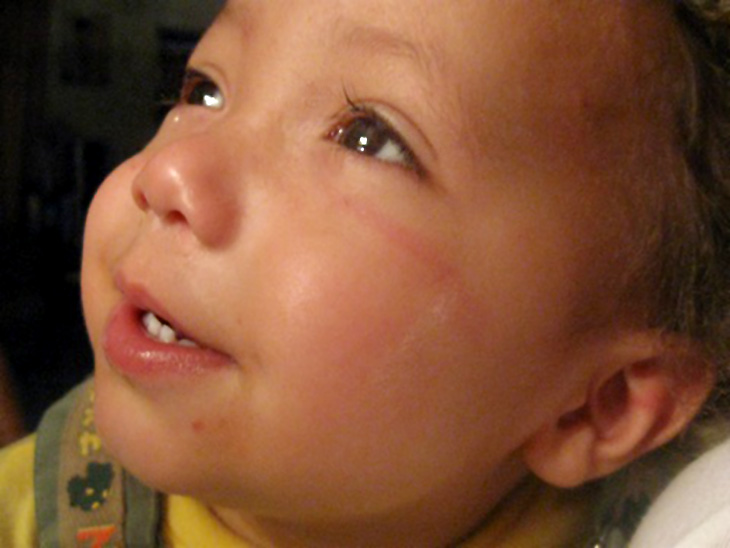
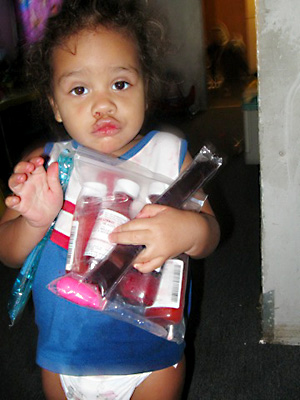
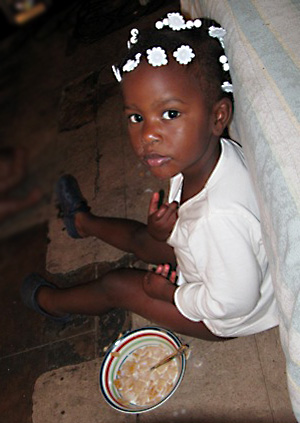
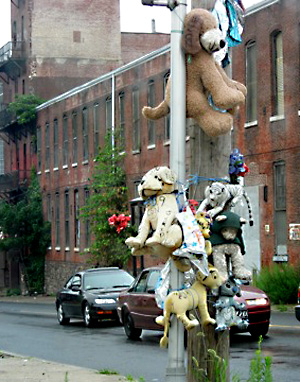
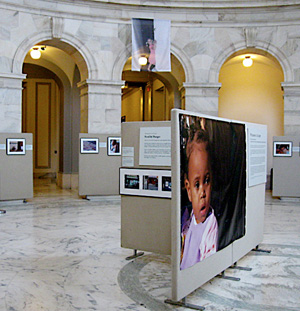
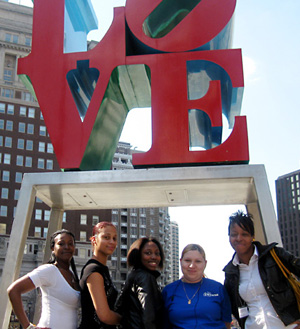
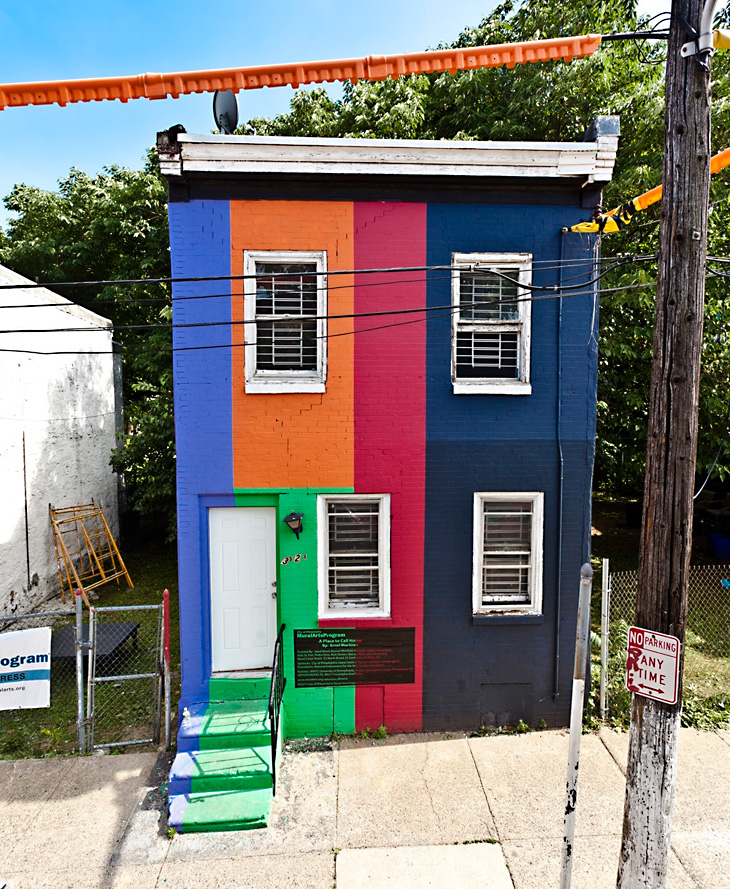
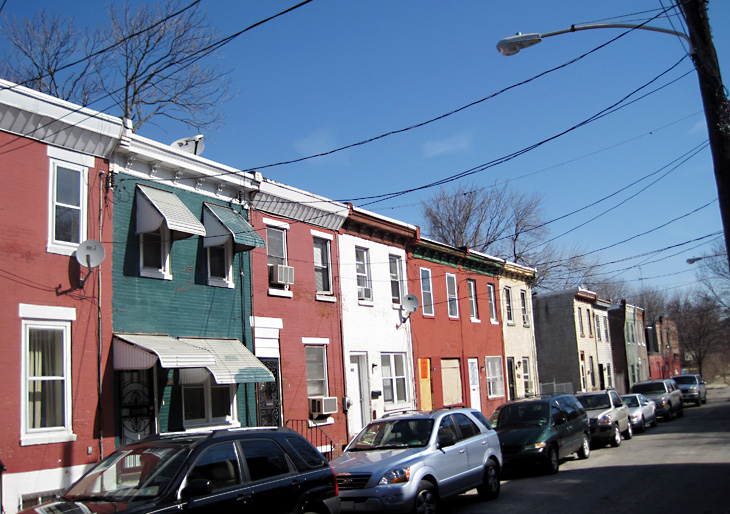
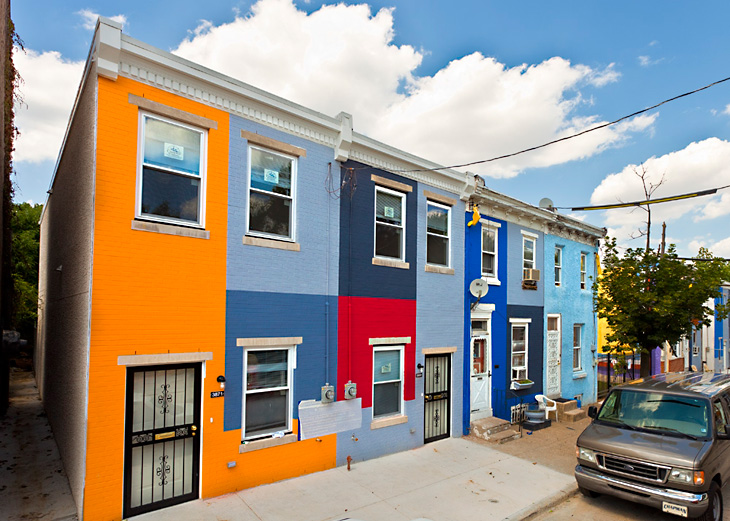
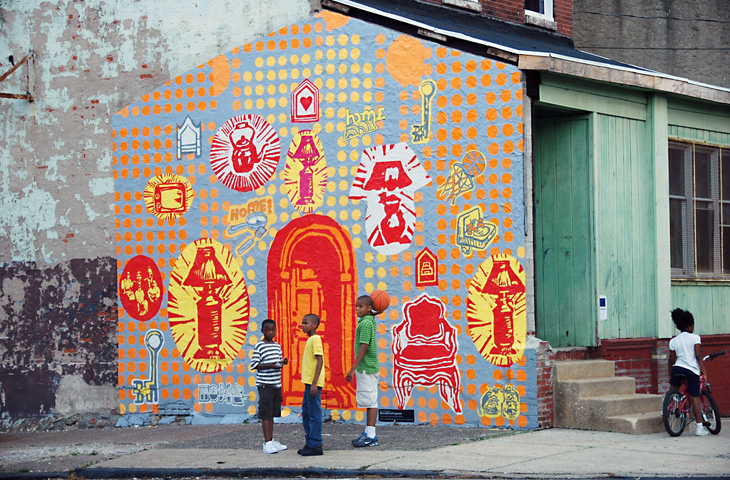
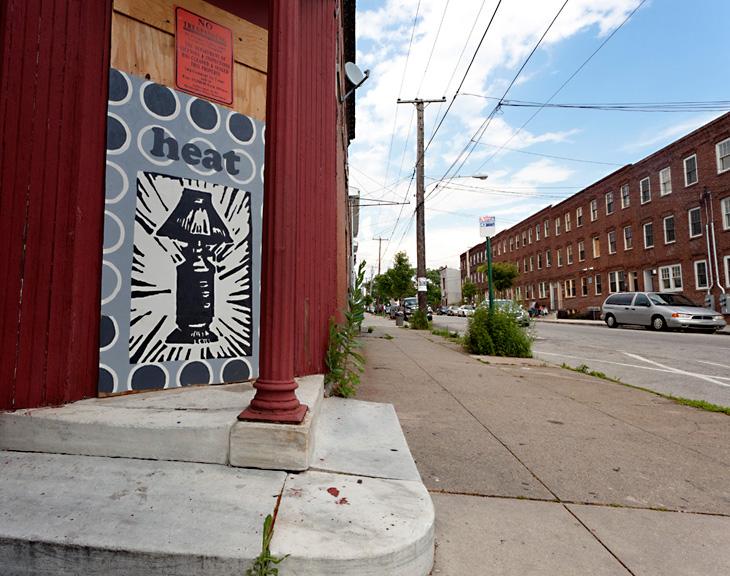
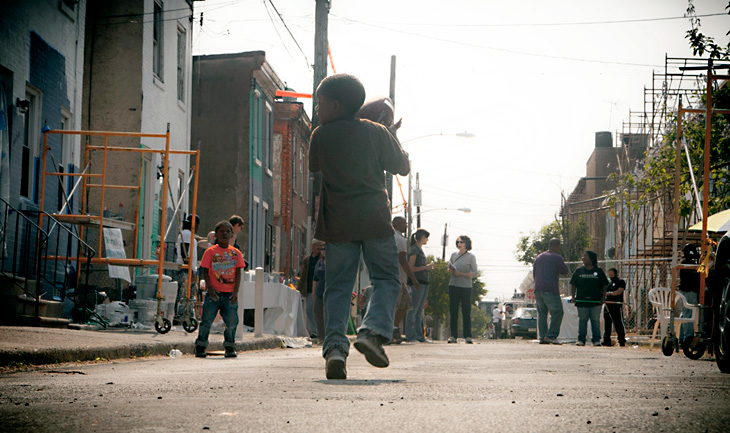
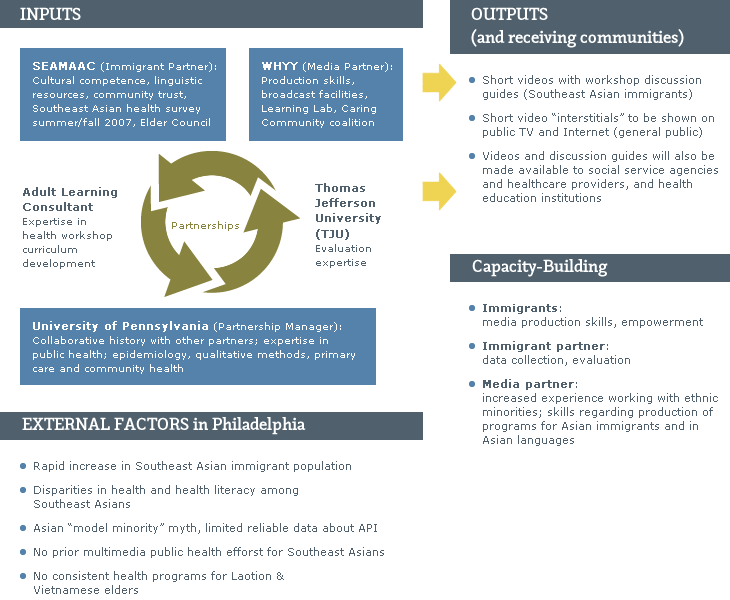
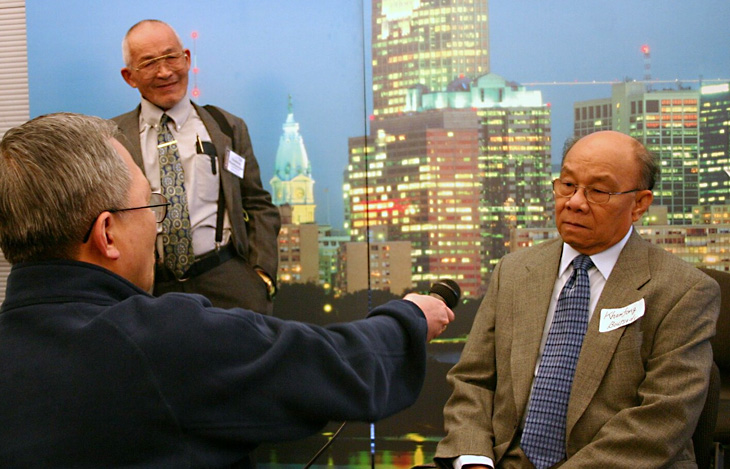
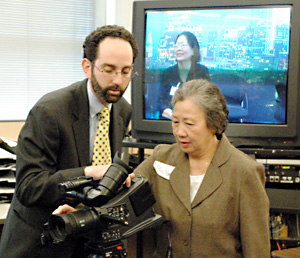 The challenges mentioned above provided the team with an unexpected opportunity to bring an intergenerational component to the project that had not been planned at the beginning. Undergraduate students and graduate interns from the Southeast Asian communities were able join the project, serving as on-set assistants, ad hoc interpreters, and video editors. This type of intergenerational collaboration was enriching for both the young people and the elders alike.
The challenges mentioned above provided the team with an unexpected opportunity to bring an intergenerational component to the project that had not been planned at the beginning. Undergraduate students and graduate interns from the Southeast Asian communities were able join the project, serving as on-set assistants, ad hoc interpreters, and video editors. This type of intergenerational collaboration was enriching for both the young people and the elders alike.
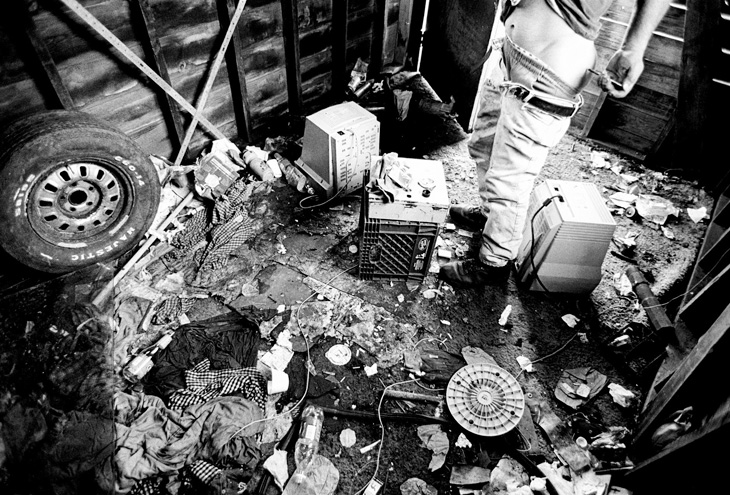
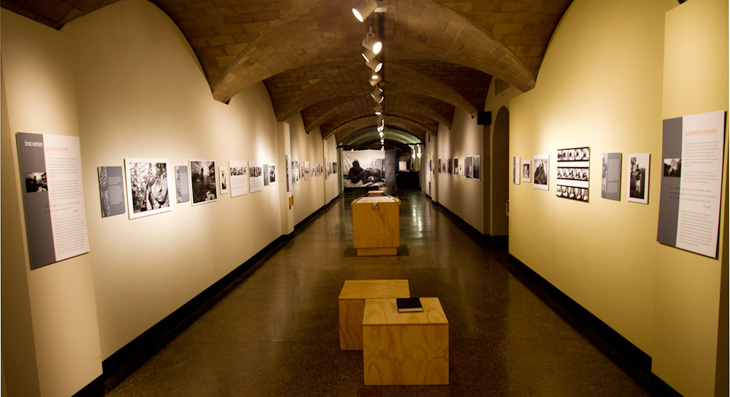
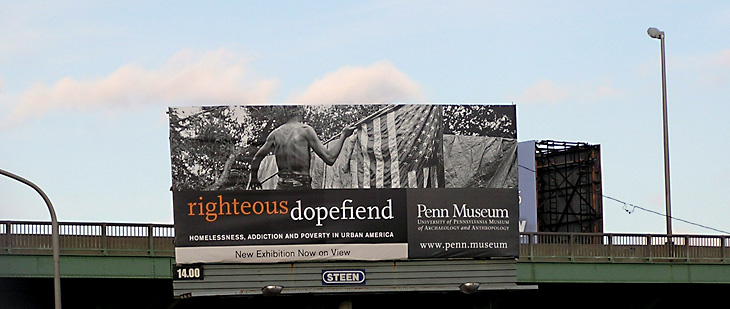
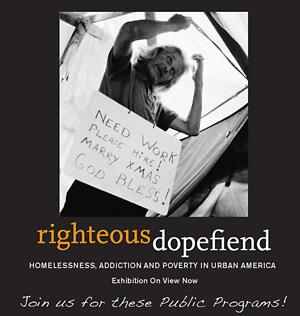 The museum extended the exhibit for an extra year and a half (running from December 2009 to March 2012), and most interesting to us was the way community groups, homeless and addiction services organizations and educators used the space, bringing their clients/patients/inmates/students for visits and reflection sessions. A blackboard and a comment and donation box allowed visitors to leave their input. Perhaps the most moving comments we have received have been from the family members of deceased heroin injectors and crack smokers. There are few public, safe, respectful, serious and forgiving spaces that acknowledge the unresolved anger, quiet confusion and frustrated longing left among close kin by addicted loved ones who have died (Garcia 2011). Most family members are forced to mourn their lost siblings, children or parents in silence—if not shame—and they remain an invisible community. The exhibit seems to allow them to come forward and situate in history and in public policy their family’s solitary painful experience in a larger shared community.
The museum extended the exhibit for an extra year and a half (running from December 2009 to March 2012), and most interesting to us was the way community groups, homeless and addiction services organizations and educators used the space, bringing their clients/patients/inmates/students for visits and reflection sessions. A blackboard and a comment and donation box allowed visitors to leave their input. Perhaps the most moving comments we have received have been from the family members of deceased heroin injectors and crack smokers. There are few public, safe, respectful, serious and forgiving spaces that acknowledge the unresolved anger, quiet confusion and frustrated longing left among close kin by addicted loved ones who have died (Garcia 2011). Most family members are forced to mourn their lost siblings, children or parents in silence—if not shame—and they remain an invisible community. The exhibit seems to allow them to come forward and situate in history and in public policy their family’s solitary painful experience in a larger shared community. 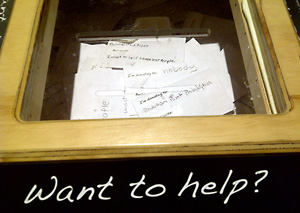 The more avant-garde exhibition space at the Slought Foundation of our initially simultaneous multimedia installation, “Righteous Dopefiend: Voices of the Homeless” ran for less than a month and it reached fewer viewers, primarily the web-based hipster public. More importantly, however, it introduced us to the value and untapped potential of multi-media—especially audio—installations of ethnographic material. For the exhibit, we prepared audio loops of excerpts from our hundreds of hours of recordings and combined them with photos of the daily activities of the characters speaking on the recording. This foray into audio-editing paired with photographs made us realize how much more the sound of voices communicates about racialized ethnicity, class, sex-and-gender, ethnographic rapport, suffering and human emotion than do transcriptions of these same voices frozen into print. Furthermore, the pain, anger, affectation, frustration, hopelessness or thoughtfulness of a tone of voice and turn of phrase are rendered more memorable or poignant by the photos-in-action displayed simultaneously with the audio loop. The limits of agency become evident to audiences listening to conversations-in-actions among the homeless. Stutters, pauses, self-corrections, hyperbole and emotional tones reveal personal ambivalences and bring alive the intimate structural and interpersonal quandaries and inconsistencies that condemn dreams and good intentions to failure—including, in the case of street addicts: safe injection practices, sobriety and consistent relations of social solidarity.
The more avant-garde exhibition space at the Slought Foundation of our initially simultaneous multimedia installation, “Righteous Dopefiend: Voices of the Homeless” ran for less than a month and it reached fewer viewers, primarily the web-based hipster public. More importantly, however, it introduced us to the value and untapped potential of multi-media—especially audio—installations of ethnographic material. For the exhibit, we prepared audio loops of excerpts from our hundreds of hours of recordings and combined them with photos of the daily activities of the characters speaking on the recording. This foray into audio-editing paired with photographs made us realize how much more the sound of voices communicates about racialized ethnicity, class, sex-and-gender, ethnographic rapport, suffering and human emotion than do transcriptions of these same voices frozen into print. Furthermore, the pain, anger, affectation, frustration, hopelessness or thoughtfulness of a tone of voice and turn of phrase are rendered more memorable or poignant by the photos-in-action displayed simultaneously with the audio loop. The limits of agency become evident to audiences listening to conversations-in-actions among the homeless. Stutters, pauses, self-corrections, hyperbole and emotional tones reveal personal ambivalences and bring alive the intimate structural and interpersonal quandaries and inconsistencies that condemn dreams and good intentions to failure—including, in the case of street addicts: safe injection practices, sobriety and consistent relations of social solidarity.